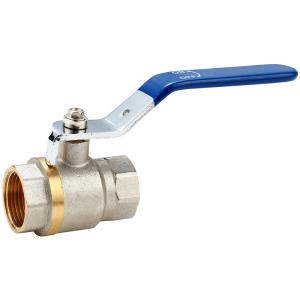1 1 4 Inch 1 1 2 Inch Brass Ball Valves Manufacturer
Add to Cart

ball valve ,bass ball valve, brass valve ,HPB 57-3,
Brass Ball Valve 1/2″-4″
HC-1777
- Size 1/2″-4″
- Max work temperature; -10℃-100℃
- Media; Water; Seawater;
- Working Pressure 25bar (362.5 psi)
- Ball valves are durable, performing well after many cycles, and reliable, closing securely even after long periods of disuse.
- Application:General
- Power:Manual
- Media: Water
- Lead-free brass type: FXF
- Market: Middle East,North Afria.
- Thread: HPB,NPT
Name Brass Ball Valve Material HPB57-3 Brand KAKA Handle Lever handle with stainless steel, Iron Media Water, Seawater Surface Sandblasted Size DN15-DN50 Testing 0.6MPa – 0.8MPa by air Connection BPS,NPT thread Turn on/off Fast quarter-turn operation Bronze Corrosion resistant Features Adjustable stem-packing gland Specs Blow-out proof pressure retaining stem - What is Brass Ball Valve
A brass ball valve is a type of valve used for controlling the flow of fluids, typically liquids or gases. It is called a "ball valve" because it features a ball-shaped disc or sphere inside the valve body that controls the flow.
The ball valve has a hole or port through its center, which is aligned with the flow path when the valve is in the open position. By rotating the handle or lever attached to the valve, the ball can be turned to block or allow the flow of fluid through the valve.
Brass ball valves are commonly made of brass, a metal alloy composed primarily of copper and zinc. Brass is known for its durability, corrosion resistance, and ability to withstand high temperatures and pressures, making it suitable for various applications.
Brass ball valves are widely used in plumbing systems, industrial processes, water supply systems, irrigation systems, and many other applications where reliable flow control is required. They are often preferred due to their long lifespan, ease of operation, and relatively low cost compared to valves made of other materials.Applications of Brass Ball Valve
Plumbing Systems: Brass ball valves are extensively used in residential, commercial, and industrial plumbing systems for controlling the flow of water. They are commonly found in faucets, toilets, showers, and other plumbing fixtures.
Water Supply Systems: Brass ball valves are used in water supply systems for regulating water flow and controlling the distribution of water. They can be found in water meters, pumping stations, water treatment plants, and irrigation systems.
HVAC Systems: Brass ball valves are utilized in heating, ventilation, and air conditioning (HVAC) systems for controlling the flow of water or refrigerant. They are commonly used in radiators, boilers, chillers, and air conditioning units.
Industrial Processes: Brass ball valves are employed in various industrial processes that involve the control of fluids. They are used in chemical plants, oil refineries, manufacturing facilities, and other industries for regulating the flow of liquids or gases in pipelines.
Gas Distribution Systems: Brass ball valves are used in natural gas and propane distribution systems for controlling the flow of gas. They are crucial components in gas pipelines, gas meters, and gas appliances like stoves and water heaters.
Laboratory Equipment: Brass ball valves are utilized in laboratory settings for controlling the flow of fluids in equipment such as gas chromatographs, autoclaves, and vacuum systems.
Agricultural Applications: Brass ball valves are used in agricultural settings for irrigation systems, livestock watering, and controlling the flow of fertilizers and pesticides.
How use brass ball valve
Familiarize yourself with the valve: Take a moment to understand the different parts of the brass ball valve. It typically consists of a handle or lever, a body, a ball with a bore through it, and inlet and outlet ports.
Determine the valve position: The brass ball valve can be in either the open or closed position. When the handle is parallel to the pipe, it indicates that the valve is open, allowing fluid to flow. When the handle is perpendicular to the pipe, it signifies that the valve is closed, blocking the flow of fluid.
Open the valve: If the valve is closed, rotate the handle or lever in a quarter-turn or 90-degree motion, aligning it parallel to the pipe. This position opens the valve, allowing the fluid to pass through.
Close the valve: If the valve is open, rotate the handle or lever in a quarter-turn or 90-degree motion, aligning it perpendicular to the pipe. This position closes the valve, stopping the flow of fluid.
Adjust the flow: Depending on the design of the brass ball valve, you may have the option to partially open or close the valve to control the flow rate. You can do this by rotating the handle to a position between fully open and fully closed.
Inspect for leaks: After opening or closing the valve, inspect the surrounding area for any signs of leakage. If you notice any leaks, ensure the valve is closed properly or consider replacing any faulty components.
FAQQ: How long is your product guarantee period?
A: We have Two years guarantee and 24 hours full-time service.
Q: What is your MOQ?
A: Normal Each Items 3000pcs MOQ.
Q: Can you accept OEM,ODM?
A: we accpet OEM.
Q: How long is your delivery time?
A: 30-35 days After Confirm Order

